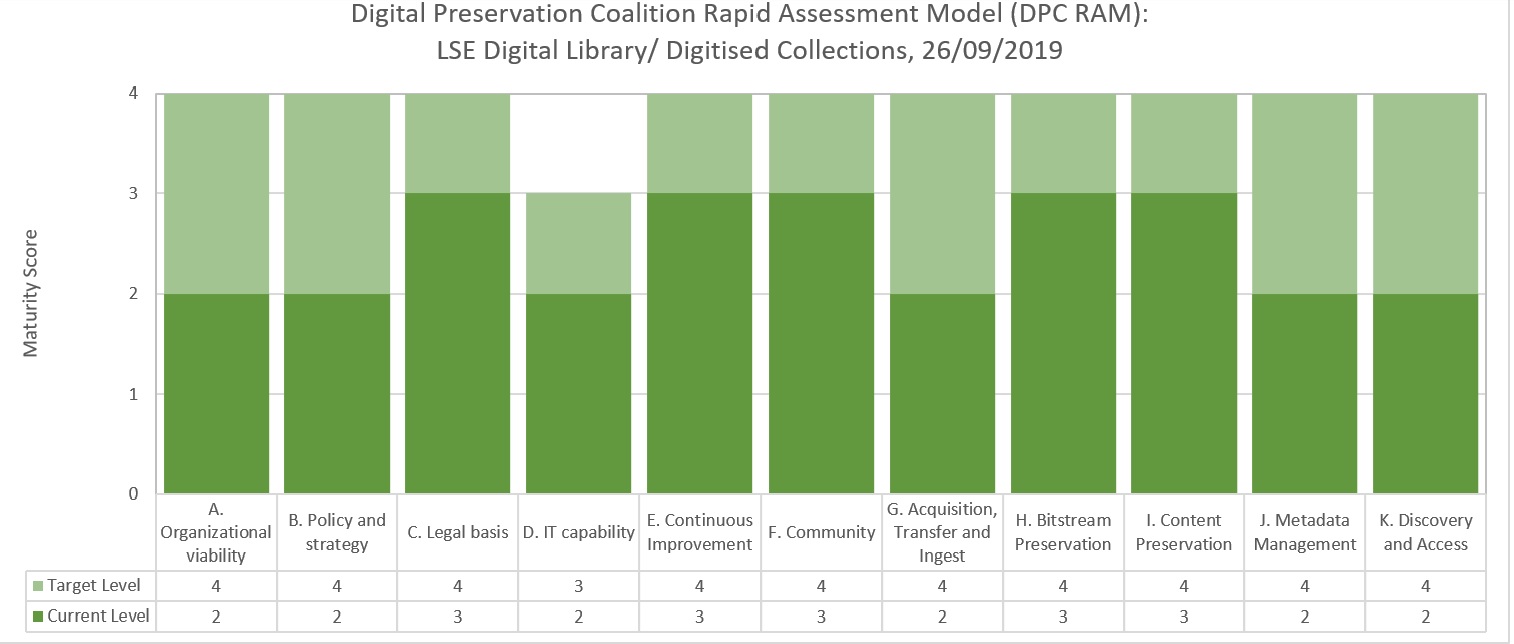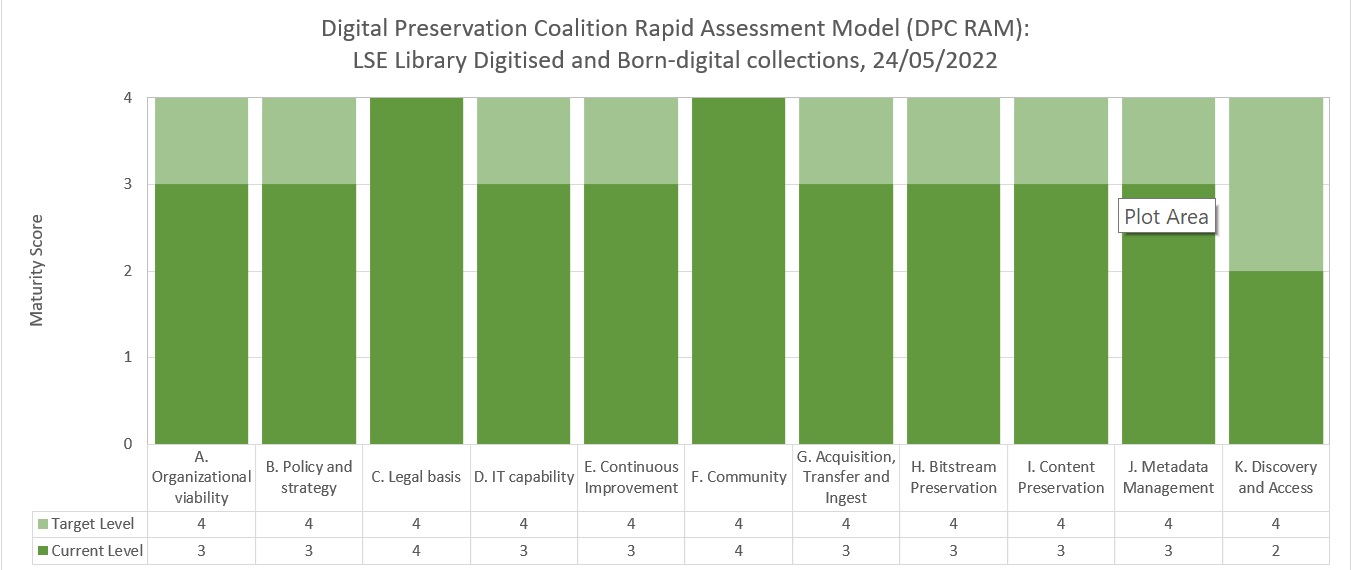Silvia Gallotti is an Archivist at the LSE Library.
The past
In 2019, my colleague Fabi Barticioti, LSE Digital Assets Manager, completed the DPC Rapid Assessment Model (RAM) to assess the status quo of LSE Library digital preservation. Fabi wrote a very useful blog post about this, where she also encourages colleagues to use this model.
At the time, the Library had only just acquired the DAMS and appointed a Digital Assets Manager. Based on digitised collections only, 6 out of 11 capabilities were scored at basic level and none at optimised level.
It is now my turn to give an update on where LSE Library is with digital preservation today.
The present
Fabi and I have recently used the DPC RAM again to also include born-digital records. When comparing the outcome with the 2019 results, it is clear that we have made great progress. Maturity levels have increased in all areas, with now only one area at basic level and 2 at optimised level.


Many factors contributed to this achievement:
-
The development of the LSE Digital Toolkit was finalised, with special thanks to Nick Bywell, Digital Library Developer, for his work on this. The toolkit provides a mechanism to control the end-to-end workflow for the digitisation and ingest of large collections. Thanks to this, ingests of digitised collections begun in earnest after a major upgrade of our DAMS during the first lockdown.
-
An archivist with responsibility for the management of born-digital archives was appointed in January 2020 and workflows for the processing of born-digital material have been developed ever since. Another archivist, Emma Pizarro, is now also contributing to this work.
-
LSE Digital Toolkit has been adapted to cater for born-digital collections and small collections recently acquired have been successfully ingested.
-
Staff skills have been upgraded, with training on our workflows and procedures and specialised software (e.g. OpenRefine, DROID, Adobe Acrobat Creative, FTK Imager) extended to more members of staff. The Library now has a Data Shapers Community of Practice, a group created by Fabi and the Training and Development team to train staff on the use of tools for the manipulation of large datasets, to help streamline complex workflows. The group is also a place for staff to discuss issues and learn together.
-
The Library has now robust documentation in place, including a digital preservation policy and guidelines to our processes and procedures. In addition, the Library depositor agreement includes a section on born-digital material and guidelines for depositors of born-digital collections exist, including accepted formats and advice on how to look after born-digital records.
-
The new LSE Digital Library was soft launched in September 2019 and now includes 13 collections - 8 digitised and 5 born-digital - with 10,477 digital objects including text, videos, audio, and image files. Our DAMS has recently been upgraded to the latest version and as the testing phase is about to come to a close, we are ready to ingest yet more collections.
-
Our legal basis are very strong, thanks to the appointment of a Copyright Officer, the Licencing Policy and Dissimination Risk Assessment for the dissemination of digitised and born-digital collections, and the Library Copyright Advice and LSE Digital Library Terms and Conditions
-
We have increased our performance in engaging with the wider digital preservation community to optimum levels, largely due to the Library hosting a trainee from TNA’s Bridging the Digital Gap Programme. We also actively engage with the DPC community by attending events and making use of their resources, and Fabi is part of the Advocacy and Community Engagement sub-committee.
The future
Our focus so far has been the ingest of digital collections as well as the development of workflows for digitisation projects and acquisition and transfer of born-digital collections.
Our priority in the coming months will be completing ingest of all our legacy digitised collections as well as processing new digitised and born-digital collections as and when they come in and assessing legacy collections. We will also be testing the scalability of workflows for appraising, cataloguing and ingesting born-digital archives. We will be carrying out user experience of our Digital Library to inform improvements to the site. In addition, we are aiming to increase access to our collections and discoverability, including providing access to restricted content and on-site access only – which at the moment is on an ad hoc basis.
The DPC RAM has a very useful tool for us. It allowed us to identify areas that need development as well as those areas where we have made significant progress. This has been invaluable in demonstrating to senior management the progress made in the last 3 years and how investment in digital preservation have given the desired returns. More importantly, that more resources are still needed to level up even further.










































































































































